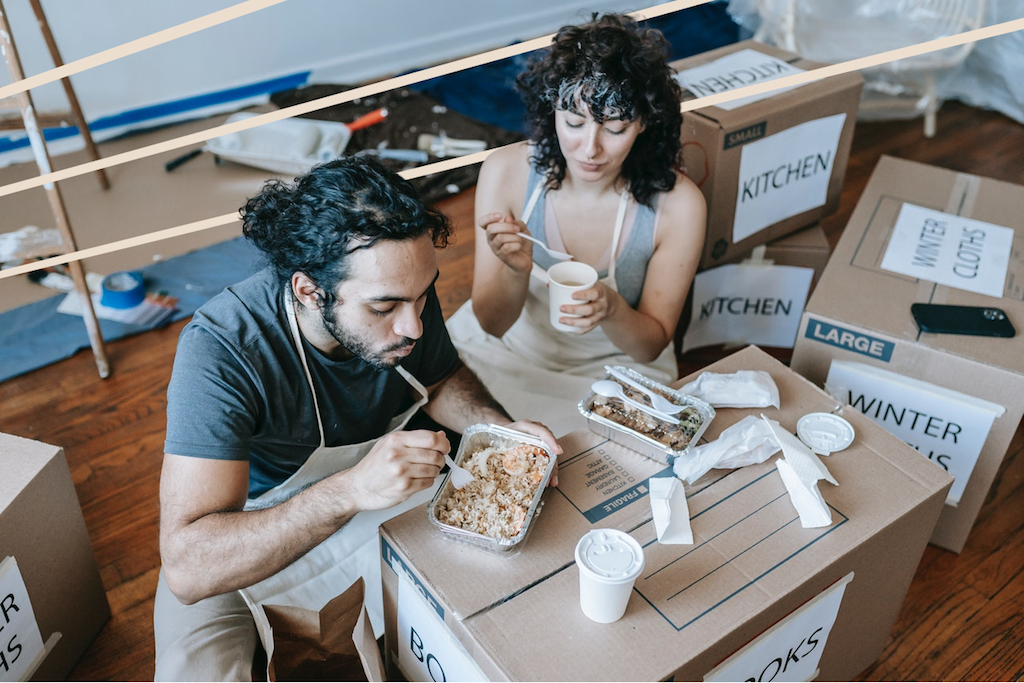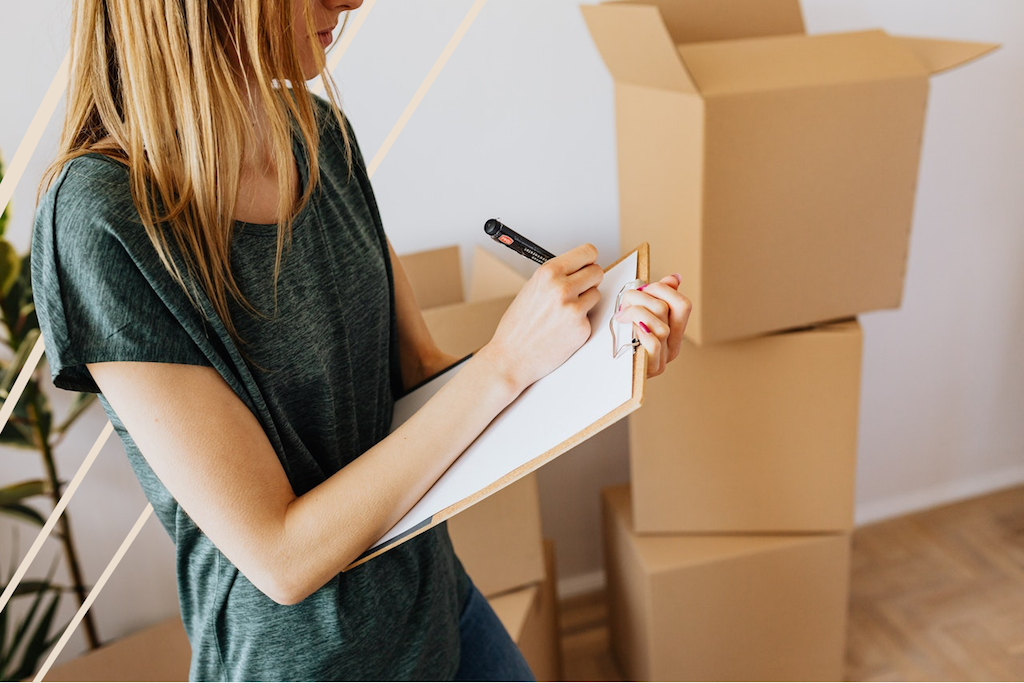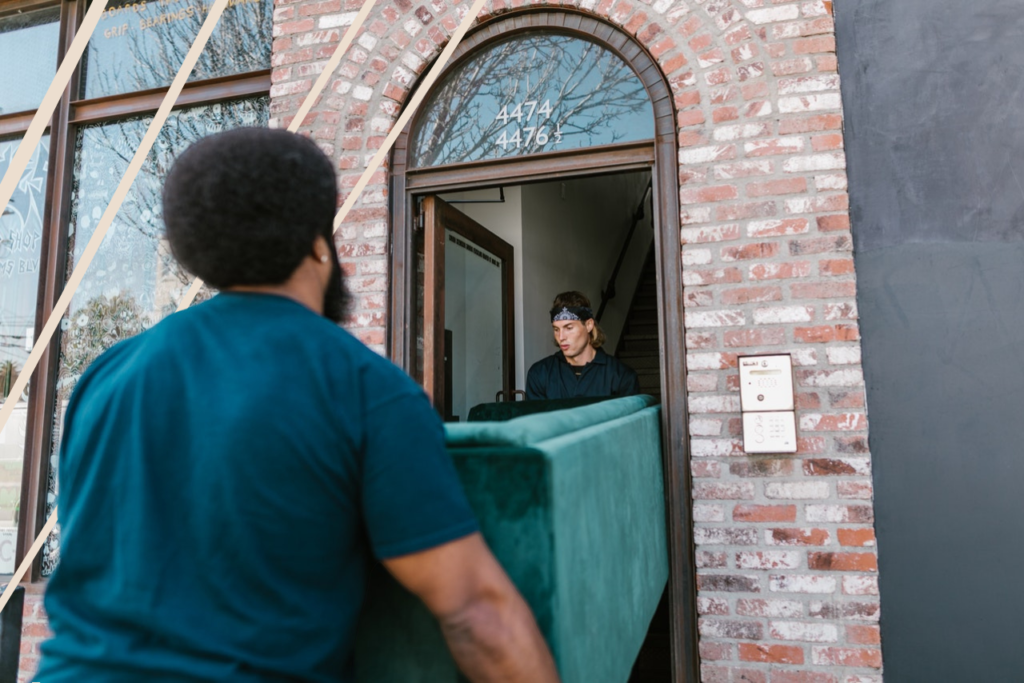This just in; a study (which was surely commissioned by a removal company) has revealed that moving house is regarded as the ‘most stressful life event’ by a whopping 57% of Brits. Indeed, as any one who has moved house before can surely attest, a smooth and successful relocation is just one broken vase away from divorce or family fisticuffs.
That said, there are (we promise!) some genuinely simple ways to make the big move less stressful, and so much of the damage limitation actually occurs before a single box has even been packed.
It’s all in the preparation, you see, and to answer your most pressing relocation questions, we’re here to help. If you’re wondering which room is best to pack up first, how much of the heavy lifting your removals company should be doing, and everything in between, you’ve come to the right place. Let’s dive in.
Which Room Should You Pack First When Preparing To Move House?
When preparing for a move, it’s best to start packing the rooms you use least frequently. This could be a guest bedroom or bathroom, attic, basement, or any storage rooms. These spaces tend to have items that you won’t need to use daily or weekly, so it makes sense to pack these areas first. Packing these rooms in advance won’t disrupt your day-to-day living in the lead up to the move.

What Order Should I Pack Up The Rooms In My House?
Having a clear, organised strategy can certainly help you tackle this whole task more efficiently. Building on the above answer, here’s a suggested order for packing up the rooms in your home:
- Guest Rooms and Spare Rooms: As these are usually used less frequently, they should be first on your list. Freeing up a guest room also gives you extra space to start organising your boxes more systematically.
- Attic, Basement, and Garage: These spaces often hold items that are less frequently used, such as seasonal decorations, tools, and outdoor supplies. It’s also a good opportunity to sort and declutter.
- Non-Essential Rooms: This could be your home office, the living room, or any other rooms that you don’t use on a daily basis.
- Kitchen: Start by packing the items you use least often, such as special occasion crockery, baking supplies, or your more esoteric appliances. As moving day approaches, you can pack everyday dishes and cooking items, leaving only the most essential items for last. You might want to consider using disposable plates and cutlery in the days leading up to the move, though consider the carbon footprint of your kitchen when doing so.
- Children’s Rooms: If you have children, you’ll want to pack their rooms closer to moving day to minimise disruption. It can be helpful to involve them in the packing process and reassure them about the move.
- Main Living Area: This includes areas such as the lounge and dining rooms. While these areas are often in frequent use, they contain items that can often be packed ahead of moving day, leaving essential items (you’ll want your sofa and TV, for sure) until last.
- Bathrooms: Pack up the guest bathrooms first, if you’re lucky enough to have one, then your main bathroom. Leave out essentials like toothbrushes, toiletries, and medication, which you’ll need right up until you leave.
- Bedrooms: You’ll want to pack clothes that aren’t in season, spare bedding, and other non-essentials first. The last things you’ll pack are your daily essentials and the bedding you’re currently using.

What Should Go In An ‘Essentials Box’ When Packing Before A Move?
Remember to have an ‘essentials box’ that you keep with you during the move, which is easily accessible for those odd few days (or even weeks!) of limbo both when packing up your property and for when you’ve just moved into your new place.
An essentials box is the last box you pack and the first one you open when you move, and should contain all the critical items needed for your first few days in your new home, functioning as the last box you pack and the first you open. For personal comfort and immediate needs, include toiletries (toilet paper, soap, shampoo, toothbrushes), a change of clothes and pajamas for each person, bedding, important documents (leases, passports, birth certificates), prescription medications, a small first aid kit, and entertainment options for both children and adults. Don’t forget phone chargers and a list of important contact information.
For practical household functionality, pack kitchen necessities such as non-perishable food, basic cookware, utensils, plates, cups, and coffee or tea supplies. Include cleaning essentials like wipes, bin bags, dish soap, and sponges to help with initial cleanup. A basic toolkit with screwdrivers, hammer, and utility knife will be invaluable for opening boxes and assembling furniture. If you have pets, remember their food, dishes, beds, and leashes. Finally, include bottled water and easy snacks to keep everyone energized during the moving process.

What Is The Best Way To Label Boxes When Packing Up A Home?
Labelling boxes effectively when packing up your home is an essential part of an efficient move. The most effective method is to utilise a colour code system, assigning a specific colour to each room. For example, use green stickers for the kitchen boxes, blue for the bathroom, yellow for the living room, and so forth.
Additionally, it’s a wise move to number your boxes within each colour category and keep an inventory list of what items go into which box. For instance, ‘Green 1’ might be kitchen utensils, and ‘Green 2’ might be crockery. This reduces the chance of misplacement or loss of items and makes it far easier to locate your possessions when unpacking.
In addition to colour and number coding, it can be helpful to clearly list the general contents of each box on the side. Avoid labelling the top of the box, as you won’t be able to see it if boxes are stacked upon one another. This way, you and your removers will know what’s fragile and needs to be handled with care, what’s heavy, and which boxes contain essential items that you will need to unpack first. Remember to also mark the boxes that contain items from your ‘essentials box’ and ensure they are the last loaded and first off the van.

What Items Should You Not Pack In A Moving Van?
When preparing for your move, it’s crucial to know that certain items should never be transported in a moving van due to safety concerns, legal restrictions, or risk of damage. While the goal is to move how you want with minimal stress, understanding these restrictions will help avoid complications on moving day.
Hazardous materials like paint, aerosols, cleaning chemicals, and flammables (including petrol, propane, and matches) should always be transported separately or safely disposed of before your move. Most removal companies are legally prohibited from transporting these items, and attempting to include them could result in delays or refusal of service.
Valuables and irreplaceable items should also stay with you rather than going in the van. This includes jewellery, important documents, family heirlooms, and electronic devices containing sensitive data. Financial items such as cash, bank cards, and chequebooks should remain in your personal possession at all times.
Perishable food items are another category to avoid packing, as they can spoil during transit and potentially damage other belongings. Plants require special consideration too – many removal companies won’t transport them due to potential pest issues, and longer journeys may cause them stress.
Finally, if you’re moving internationally, be aware that there are often strict regulations regarding what can cross borders, including certain foods, plants, and medications. When in doubt, consult with your removals company about their specific policies and recommendations for handling these restricted items.
Just How Much Of The Heavy Lifting Can I Expect My Removals Company To Do?
When hiring a house removals company, you can typically expect them to handle virtually all of the heavy lifting. This includes loading large items such as furniture, appliances, and heavy boxes onto the removal van, securely storing and organising these items during transit, and then unloading them at your new property.
Many removal companies also offer additional services such as dismantling and reassembling furniture, packing and unpacking your items, and even providing packing materials. However, these services may come at an additional cost and should be discussed beforehand.
It’s worth noting that although a removals company will handle the physical heavy lifting, it’s your responsibility to ensure that items are ready to be moved and there is clear access. Also, it’s always a good idea to keep an eye on how your possessions are being handled, and direct the movers as necessary for particularly valuable or delicate items.
Remember, when choosing a removals company, it’s important to clarify exactly what their service includes, so there are no surprises on moving day. Because, let’s face it; this is not a day when surprises are at all welcome.





